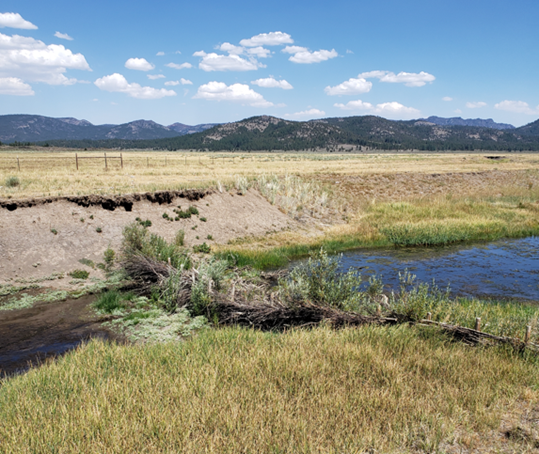Effects of Restoration on Water Quality in a Sierra Nevada Meadow

Abstract
Sierra Nevada meadows have the capacity to improve water quality by filtering out non-point source (NPS) pollutants and releasing clean water downstream. Red Clover Valley (RCV) is a large Sierra Nevada meadow currently undergoing restoration along two creeks that flow through the meadow. Under current climate warming predictions, meadows will experience higher air temperatures and less seasonal snowpack, threatening water availability, which has implications for water quality, ecological function, and community resources. Restoration looks to promote water storage at higher elevations for longer periods of time, increasing late summer stream flows, improving water quality, and supporting aquatic habitats. This research investigated water quality along two creeks in RCV which used different restoration techniques. Water quality varied between Red Clover Creek, influenced by grade control structures (GCS), and Dixie Creek, influenced by beaver dam analogs (BDAs). Dixie Creek had cooler stream temperatures and disrupted nutrient transport downstream, whereas Red Clover Creek had higher stream temperatures and greater nutrient transport downstream. Upstream vegetation was highly correlated with lower stream temperatures later in the growing season. This supports core conceptual models for meadow hydrology where greater upstream riparian vegetation can limit daily maximum stream temperatures during low flow periods by promoting groundwater and providing riparian shade. Locations of potential groundwater sources, contributing to cooler stream temperatures, are highlighted, and supported by other water quality data. Diel cycles of pH, dissolved oxygen (DO), and inorganic carbon were also observed suggesting a strong influence of photosynthesis and respiration occurring in the water column. This temporal trend could indicate episodic acidification and should further be investigated. Continued monitoring of water quality in RCV will provide useful information for adaptive management and may serve as a tool for planners to understand how meadow restoration influences water quality.